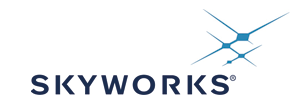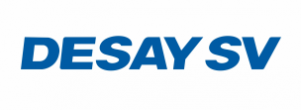[vc_row css_animation=”” row_type=”row” use_row_as_full_screen_section=”no” type=”full_width” angled_section=”no” text_align=”left” background_image_as_pattern=”without_pattern”][vc_column][vc_column_text]On December the 5th the ATU (Africa Telecommunications Union), in collaboration with AUB, ITU, and DRM and WorldDAB consortiums, conducted a 1-day online workshop attended by over 110 participants from most of the African countries. They were representing governments, regulators, public, commercial and community stations. The aim of the event was to promote DSB (Digital Sound Broadcasting which recommends the two major open standards: DRM and DAB+) in Africa.

After intense work during 2022, ATU has drafted a DSB strategy that introduces and recommends DSB, both DRM and DAB+, individually or together, as the basis for radio digitisation on the continent. The strategy for introduction and promotion of DSB in Africa can be found on atuuat.africa.
Starting the workshop, the DRM Consortium experts tackled head-on the digitisation blueprint, the stages for a successful roll-out of DRM. After a short introduction and global roll-out summary given by Ruxandra Obreja, the DRM Chairman, Alexander Zink, DRM Vice-chairman introduced some of the benefits of DRM. The multi-bloc transmission of up to 18 audio services and 6 data channels from one single transmitter, used by several independent broadcasters sharing thus the costs, was of great interest to the African participants. As was the emergency warning functionality and other DRM applications like distance learning, public signage, or traffic information.
The use of just 100 kHz for three DRM audio services and one data channel on one frequency was then practically explained by the South Africa DRM Group Chairman, Aldred Dryer, who gave a summary of the AM and FM trials conducted in his country. The DRM Marketing Director, Radu Obreja, presented the variety of DRM receivers and solutions already available for acquisition or for starting joint ventures. Matthew Phillips of CML Microcircuits/Cambridge Consultants introduced the complete module of his company: a very energy efficient and low-cost option that could be the perfect solution for the millions of avid African radio listeners.
The message of the DRM experts is that DRM is made for Africa as it is one single, open technical standard that can be used for information, education, entertainment, emergencies. It is green and flexible enabling the broadcast of 3 audio services and 1 data channel (in one bloc of 100 khz or ½ FM channel) or up to 6 blocs with 18 audio services and 6 extra digital channels from one single transmitter and antenna, to be used by one or several independent broadcasters.
DRM is the only solution for full country coverage. As Nigel Fry of the BBC World Service concluded at the ATU event: Content is King, but coverage is Queen!
Once the digitisation decision for DSB is taken by a country, the receiver question must be solved. And the DRM encouragement is: Make receivers local and locally!
The DRM Consortium is keen to work with African partners, is ready to jointly organise ATU and national workshops for mutual benefit.
To get in touch, cooperate and receive the full ATU presentations of December 5th, please contact us at: projectoffice@drm.org.[/vc_column_text][vc_empty_space][/vc_column][/vc_row][vc_row css_animation=”” row_type=”row” use_row_as_full_screen_section=”no” type=”full_width” angled_section=”no” text_align=”left” background_image_as_pattern=”without_pattern”][vc_column][qode_advanced_image_gallery type=”slider” enable_image_shadow=”no” space_between_items=”large” slider_loop=”yes” slider_autoplay=”yes” slider_padding=”no” slider_navigation=”yes” slider_pagination=”yes” images=”12152,12153,12156,12154,12155″ image_size=”1024×748″][/vc_column][/vc_row]

















